Table of Contents
The geography of Algeria is a fascinating amalgamation of varied terrains and historical depth. Located in North Africa, Algeria geographic positioning has been instrumental in molding its history and cultural identity.
Situated in the Maghreb region of the continent, Algeria geography entices adventurous travelers with its expansive Sahara Desert, captivating Atlas Mountains, and picturesque Mediterranean coastline. From exploring the vast dunes of the Sahara to experiencing the cultural richness of Algiers, Algeria’s diverse landscapes and profound history present an unforgettable adventure for intrepid tourists seeking a distinct and immersive experience.
Algeria physical geography portrays a spectrum of natural wonders. From the breathtaking expanses of the Sahara, symbolizing the nation’s desert heritage, to the varied ecosystems ranging from Mediterranean coastlines to mountainous regions, Algeria stands as a beacon of nature’s magnificence.
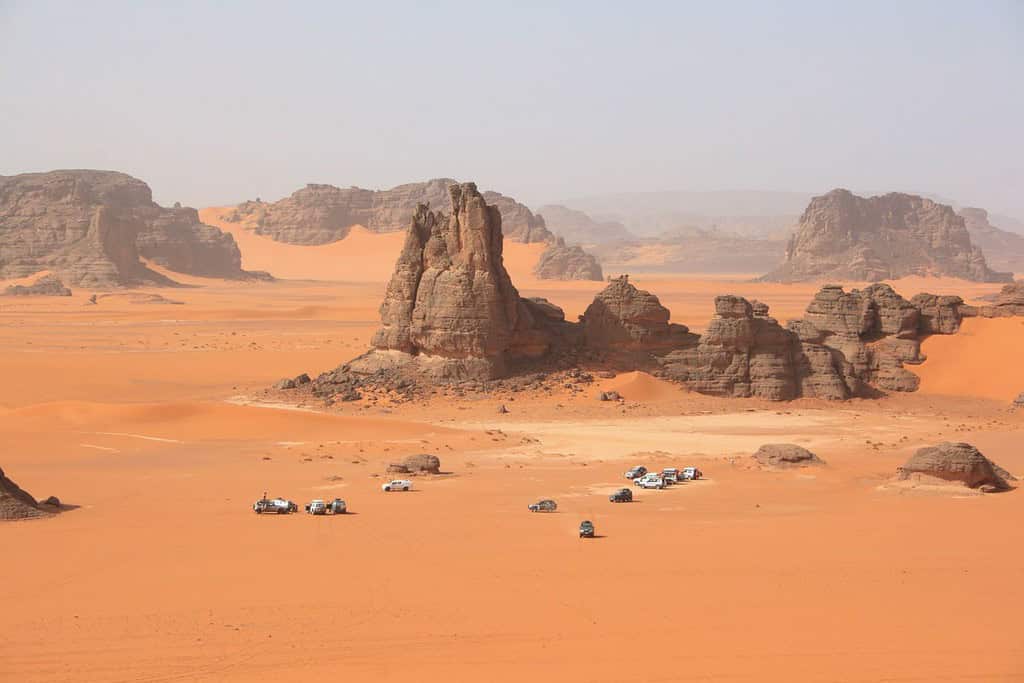
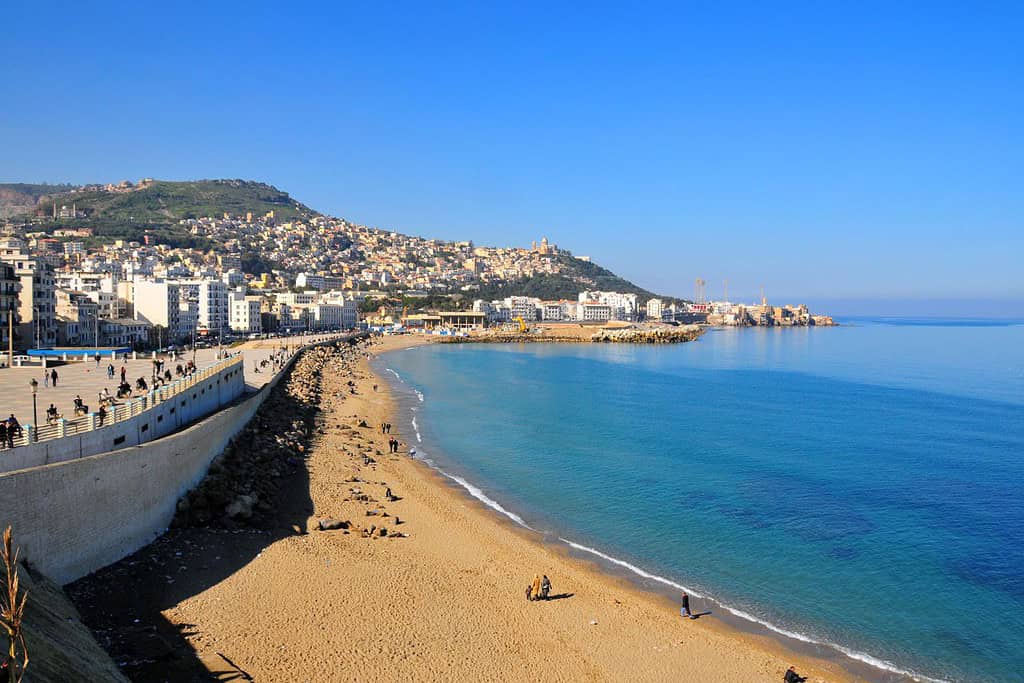
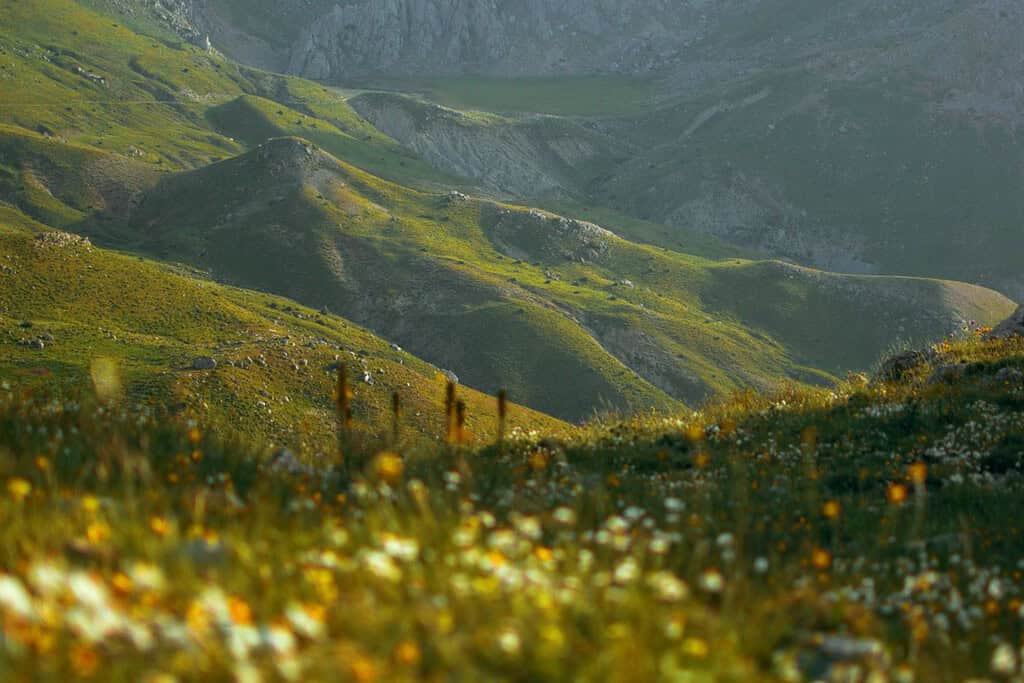
Top Geographic Features of Algeria
- Atlas Mountains: Stretching across northern Algeria, the Atlas Mountains greatly influence the country’s climate and landscape. This range is known for its diverse flora and fauna, as well as historical Berber communities.
- Sahara Desert: Covering a vast portion of Algeria, the Sahara is the world’s largest hot desert. Its endless dunes, oases, and unique desert wildlife define much of Algeria’s geographical identity.
- Mediterranean Coastline: Algeria’s northern border is graced by the Mediterranean Sea, offering beautiful beaches, coastal plains, and significant port cities that contribute to the nation’s economy and culture.
- Ahaggar Mountains: Situated in the Sahara Desert, these mountains are known for their unique rock formations, ancient volcanic activity, and prehistoric rock art.
- Chelif River: The longest river in Algeria, the Chelif flows through the northern part of the country, supporting agriculture and acting as an important water source for local communities.
- Tell Atlas: Part of the Atlas Mountain range, the Tell Atlas runs parallel to the coast and is characterized by fertile valleys and forests, contributing to Algeria’s agricultural productivity.
- Tassili n’Ajjer: A vast plateau in southeastern Algeria, known for its otherworldly landscapes, prehistoric rock paintings, and as a UNESCO World Heritage Site.
- Hoggar Plateau: Located in the central Sahara, this plateau is known for its rugged terrain, stunning sunsets, and as the location of the highest point in Algeria, Mount Tahat.
- Grand Erg Oriental: One of the largest sand seas in the Sahara, this area is characterized by its massive sand dunes and is a significant feature of Algeria’s desert landscape.
- Kabylie Region: A mountainous area in the north, known for its dense forests, traditional Berber culture, and as a center for agriculture, particularly olive and fig farming.
These Algeria geographic features are integral in defining Algeria’s landscape, climate, and cultural heritage, highlighting the country’s diverse and rich geographical tapestry.
Algeria Geography
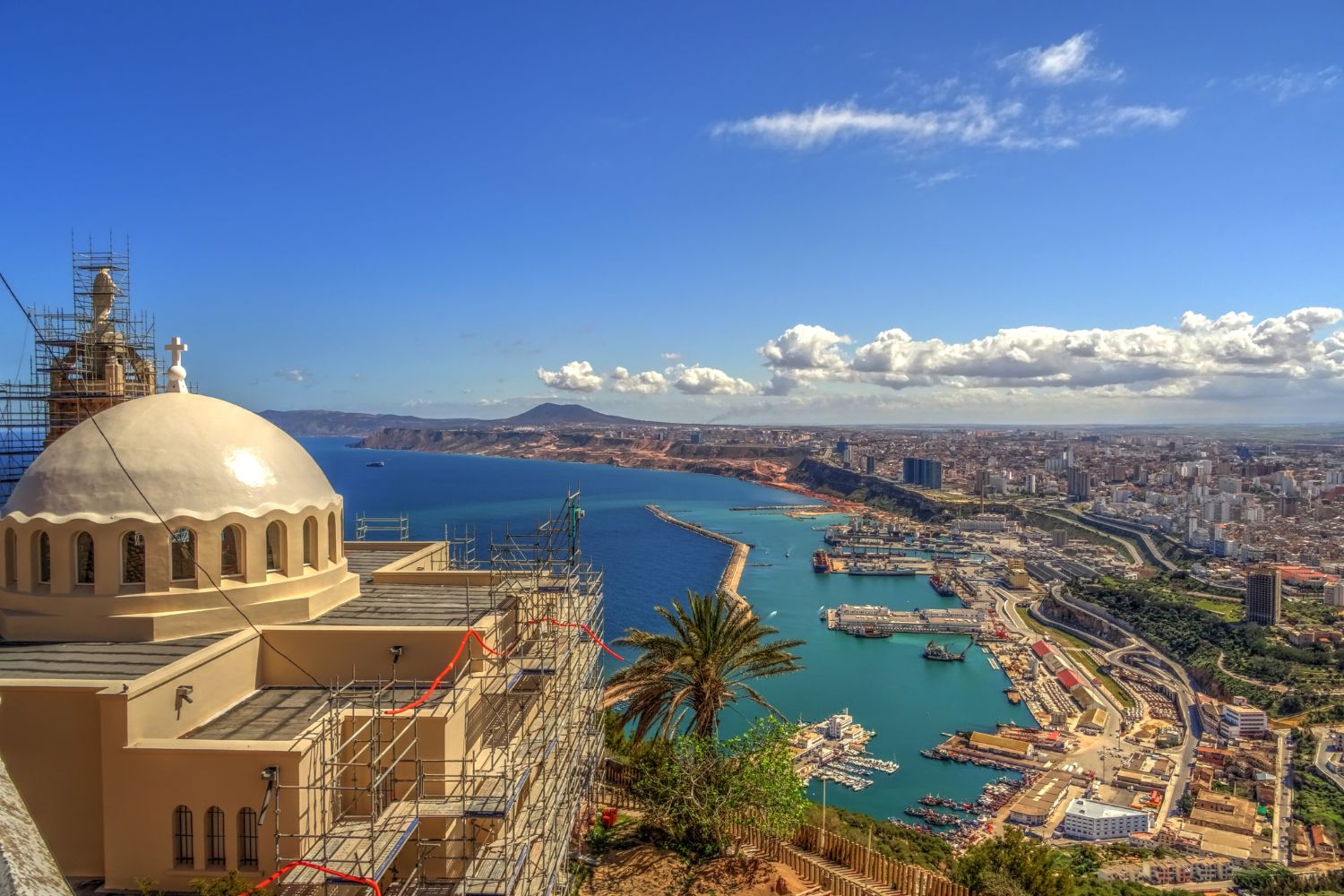
Exploring the Algeria National Geographic canvas unveils a stunning array of geographic features. From the towering Atlas Mountains to the expansive Sahara Desert and the fertile plains of the Tell Atlas, the country presents a captivating landscape of natural wonders.
- Mountain Ranges – The Crown of Diversity: Similar to documentaries that often feature towering mountain ranges, Algeria boasts the majestic Atlas Mountains. These rugged peaks not only add to the country’s scenic beauty but also offer unique biodiversity and have shaped its cultural identity.
- Deserts – A Vast Sea of Sand: Algeria’s Sahara Desert, akin to the endless sand dunes often captured in photographs, represents a vast and mystical landscape. This immense desert, stretching far and wide, showcases the nation’s geological extremes.
- Tell Atlas – Fertile Plains of Life: Just as documentaries highlight diverse landscapes, Algeria’s Tell Atlas region showcases fertile plains that support a variety of wildlife and agriculture. This region, rich in history and culture, tells stories of ancient civilizations and modern developments.
- Historical Sites – Unveiling the Past: Algeria’s historical sites, like the Roman ruins of Timgad, evoke memories of explorations that uncover ancient empires. These remnants stand as testament to the country’s rich historical heritage.
- Ethnic Diversity – A Cultural Melting Pot: Similar to the National Geographic focus on diverse cultures, Algeria is a tapestry of ethnic groups, including Arab-Berbers and minority communities. Each group contributes unique traditions, languages, and customs, creating a vibrant cultural mosaic.
- Wildlife – A Sanctuary for Nature: Algeria’s protected areas, such as the Tassili n’Ajjer National Park, mirror the coverage of wildlife conservation. These regions serve as crucial habitats for diverse species, preserving biodiversity in varied environments.
- Geological Marvels – A Natural Showcase: The country’s geological wonders, like the Hoggar Mountains, showcase Algeria’s natural beauty amidst the formidable Sahara. Such structures demonstrate the dynamic forces of nature at work.
- Remote Exploration – Uncharted Territories: The remote and isolated regions of the Sahara beckon adventurers, much like quests into uncharted territories. This vast expanse offers a glimpse into untouched landscapes and unique ecosystems.
Algeria geographic features are marked by the dominating presence of the Atlas Mountain range. These majestic peaks, which stretch along the northern edge of the country, create a breathtaking backdrop for the nation’s diverse topography. The historic trans-Saharan trade routes, once vital for commerce and cultural exchange, traverse these formidable mountains and the vast Sahara, connecting regions of North Africa.
Algeria Geographic Location
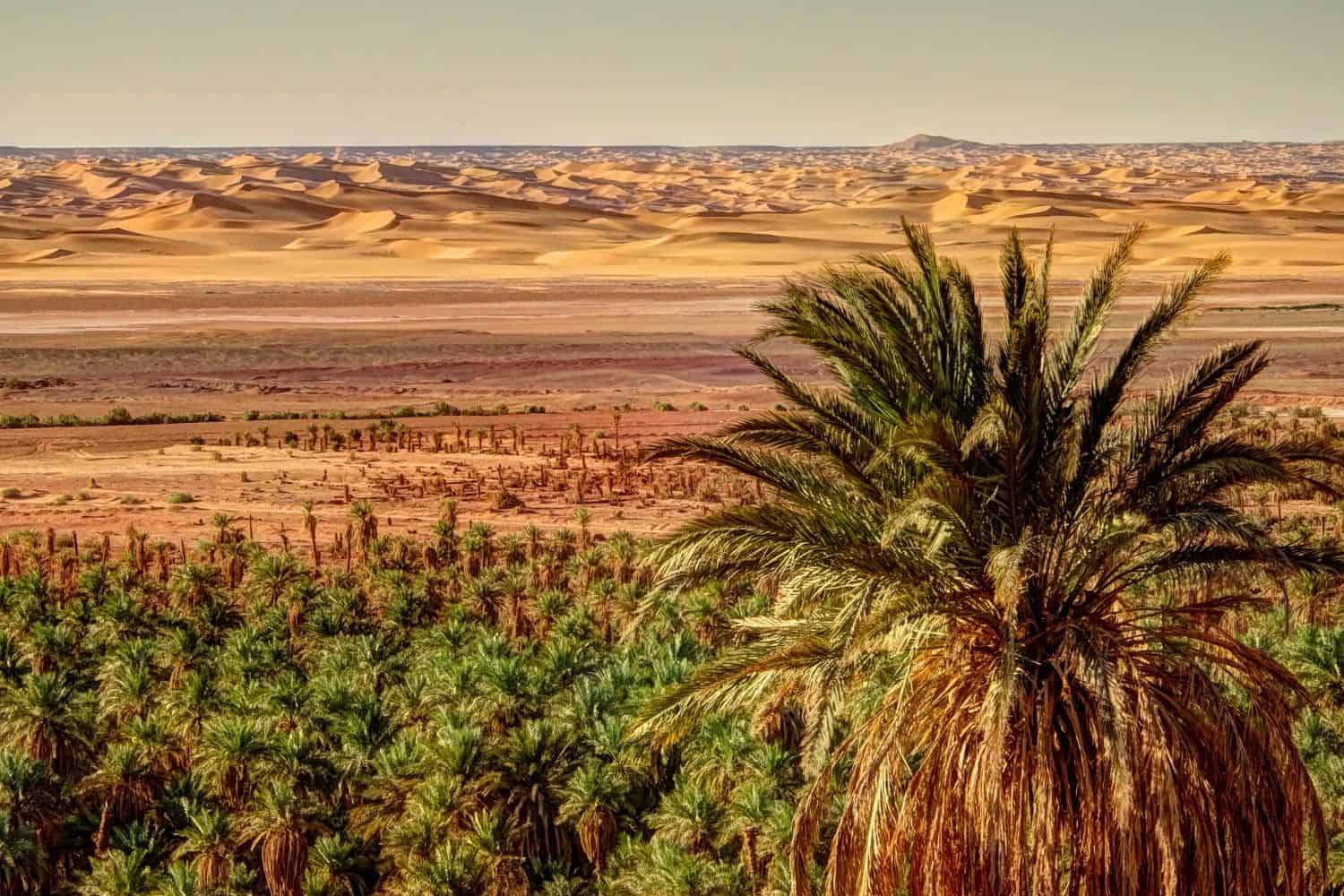
Algeria geographic location is strategically significant, and its position has been crucial throughout history. Located in the northern part of Africa, the country has served as a nexus for trade, culture, and ideas, underlining its historical importance.
Borders of Algeria
Algeria shares borders with six countries. Here is Algeria’s physical geography with the neighboring countries and the approximate total length of each border:
- Morocco: The border between Algeria and Morocco is approximately 1,559 kilometers long.
- Mauritania: The border between Algeria and Mauritania is approximately 463 kilometers long.
- Mali: The border between Algeria and Mali is approximately 1,376 kilometers long.
- Niger: The border between Algeria and Niger is approximately 956 kilometers long.
- Libya: The border between Algeria and Libya is approximately 982 kilometers long.
- Tunisia: The border between Algeria and Tunisia is approximately 1,034 kilometers long.
| Algeria Neighboring Country | Border Length (Approximate) |
|---|---|
| Morocco | 1,559 kilometers |
| Mauritania | 463 kilometers |
| Mali | 1,376 kilometers |
| Niger | 956 kilometers |
| Libya | 982 kilometers |
| Tunisia | 1,034 kilometers |
These international borders define Algeria’s connections to different regions and contribute to the country’s geopolitical significance as a bridge between North Africa and the Sahel region. The extensive land borders, especially those with the Sahara desert, highlight Algeria’s strategic position in regional and continental geopolitics.
Geography of Algiers Algeria
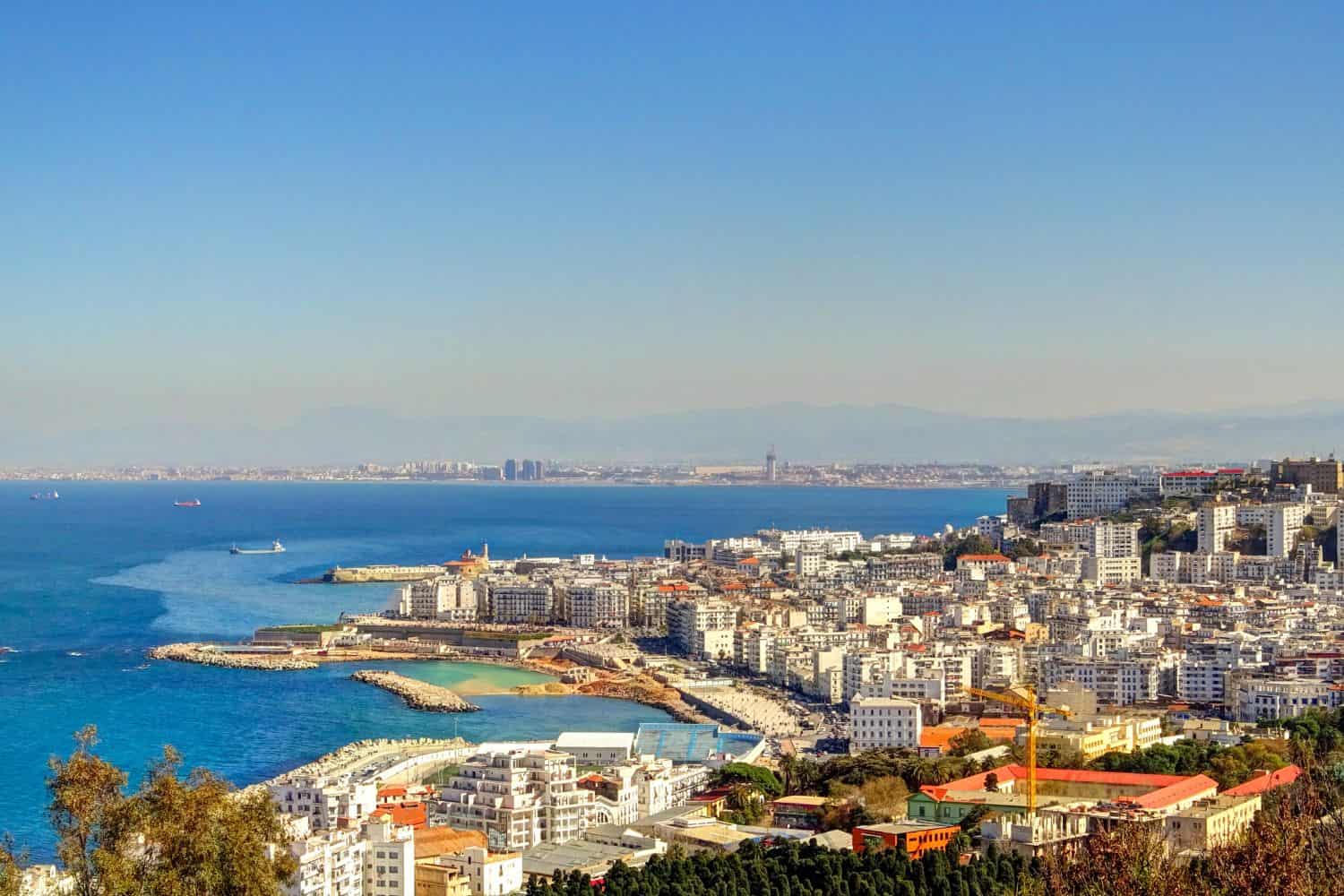
As the capital city of Algeria, Algiers offers a compelling glimpse into the nation’s human geography. The city is a melting pot of diverse ethnic groups, including Arab-Berbers, Kabyles, and French descendants, contributing to its rich cultural fabric.
Algiers, the capital city of Algeria
- City of Contrasts: Known for its distinct contrasts, Algiers features a mix of modern high-rises and traditional Casbah, showcasing an intriguing blend of historic and contemporary elements.
- Mediterranean Coastline: Algiers is situated along the Mediterranean Sea, which is integral to its maritime trade and transport.
- Algiers’ Elevation: The city is perched on a series of coastal terraces, ascending from the sea to the Sahel, the hilly region to its south.
- Green Spaces: Algiers is adorned with numerous parks and green areas, such as the Jardin d’Essai du Hamma, providing tranquil retreats within the urban landscape.
- Historical Significance: With a history that dates back to Phoenician times, Algiers has been a significant player in the Mediterranean and North African history, marked by various cultural and political epochs.
- Diverse Architecture: Algiers showcases a rich architectural tapestry, with influences from Ottoman, French colonial, and contemporary designs.
- Music and Cultural Scene: Algiers is a center for Algerian music, particularly Rai, and its cultural scene reflects the country’s diverse heritage.
- Governmental Buildings: Iconic government buildings, like the Palais des Raïs, stand as testaments to Algiers’ political history and importance in Algeria.
- Algiers’ Economy: Serving as the economic, commercial, and cultural heart of Algeria, Algiers attracts individuals from across the nation seeking opportunities and advancement.
- Population Dynamics: Algiers has seen significant population growth, with migration from rural areas and other countries leading to urbanization challenges and infrastructure development needs.
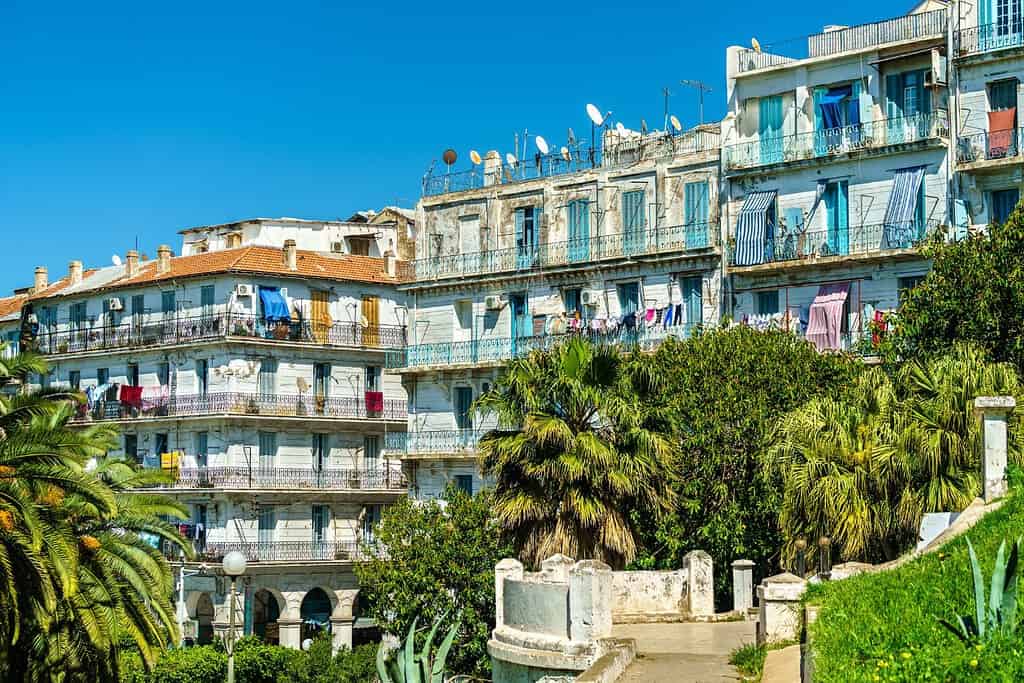
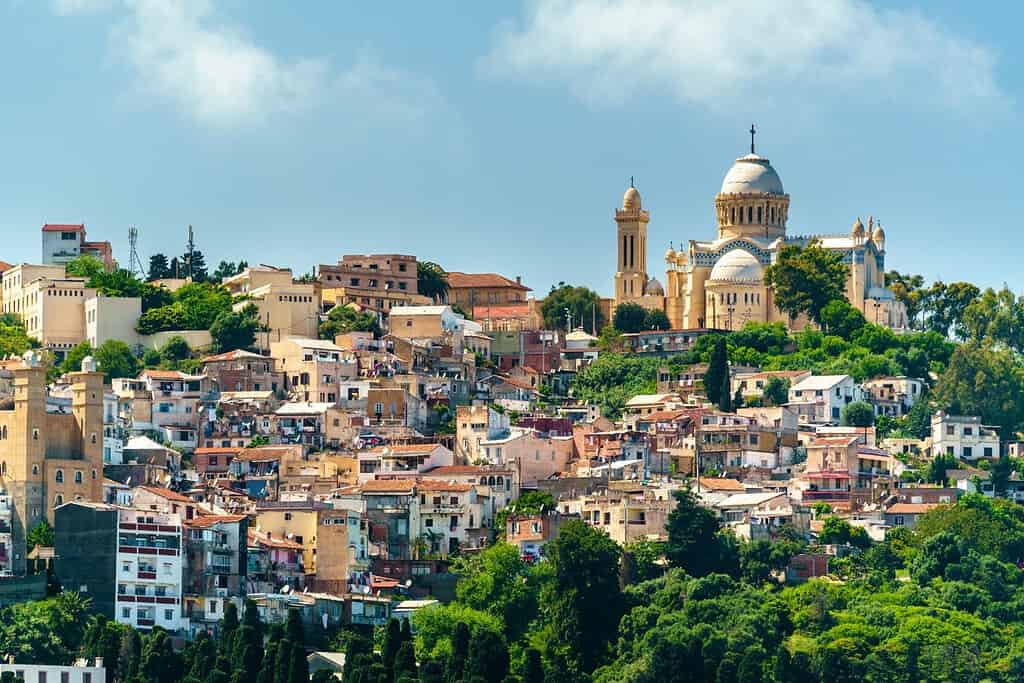
Historical Geographical Importance of Algeria
Algeria’s geographical significance has been pivotal throughout history, making it a central stage for various historical events. The country’s location has influenced interactions between different civilizations, from the ancient Roman and Ottoman empires to French colonialism, and the indigenous Berber kingdoms.
- Strategic Mediterranean Location: Algeria’s position along the Mediterranean Sea has made it a crucial point for maritime trade, cultural exchanges, and military campaigns, influencing Mediterranean and North African history.
- Ancient Trade and Cultural Exchange: Algeria served as a crossroads for ancient trade routes, connecting the Mediterranean world with sub-Saharan Africa, enabling the exchange of goods, ideas, and cultures.
- Roman and Ottoman Empires: As part of both the Roman and later Ottoman empires, Algeria’s strategic location and resources made it a valuable territory, shaping its historical trajectory.
- French Colonial Era: The French colonization in the 19th and 20th centuries profoundly impacted Algeria’s social, cultural, and political landscape, leaving lasting effects.
- Indigenous Berber Influence: The indigenous Berber communities, with their rich history and culture, have been integral to Algeria’s identity, influencing its early history and ongoing cultural evolution.
- Resistance and Independence: Algeria was a center of resistance against colonial rule, notably during the Algerian War of Independence, leading to its emergence as a sovereign nation in 1962.
- European and African Influences: The geographical position of Algeria has attracted diverse influences from both Europe and Africa, creating a unique cultural and demographic blend.
- Sahara Desert and Oil Wealth: The vast Sahara Desert, covering a significant part of Algeria, is rich in natural resources, particularly oil and gas, playing a crucial role in the country’s economy and global significance.
- Cultural Richness and Diversity: Algeria’s diverse landscapes, from the Mediterranean coast to the Saharan dunes, have contributed to a rich tapestry of arts, music, and architecture, including the vibrant Rai music genre.
The geographical position of Algeria is a mosaic of natural beauty and historical significance. Boasting diverse landscapes ranging from the sweeping Sahara Desert to the Mediterranean coastline, Algeria is a testament to nature’s splendor and the crossroads of civilizations. Despite its challenges, Algeria remains an enchanting destination for adventurous travelers and inquisitive minds, drawn to its blend of natural wonders and rich historical tapestry.
In conclusion, Algeria’s geographical importance has cast it as a stage for historical narratives, with various empires and cultures competing for influence and imprinting their legacy on the region’s history. Its strategic location has been instrumental in shaping significant historical events and continues to be a key player in the geopolitics of the region today.
More About Algeria
[the-post-grid id=”53368″ title=”Algeria Main page”]
